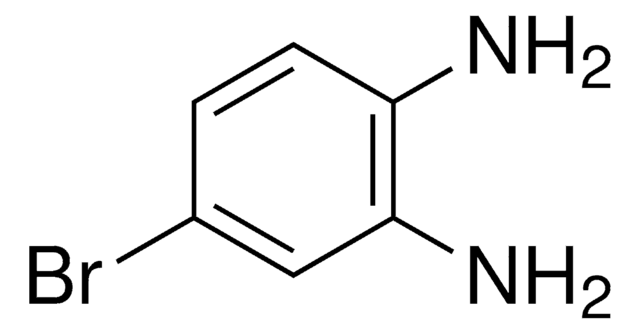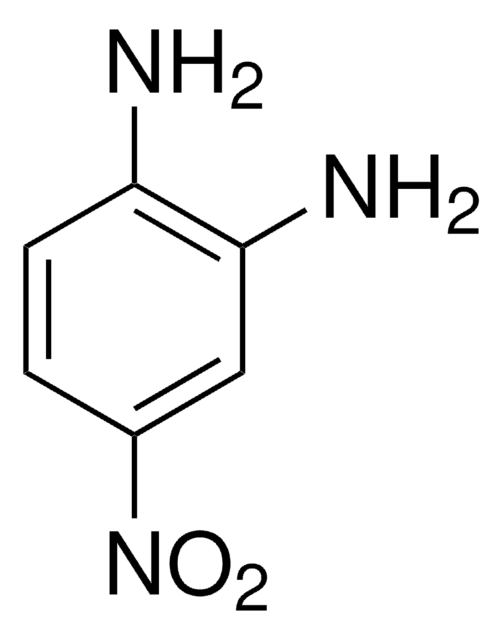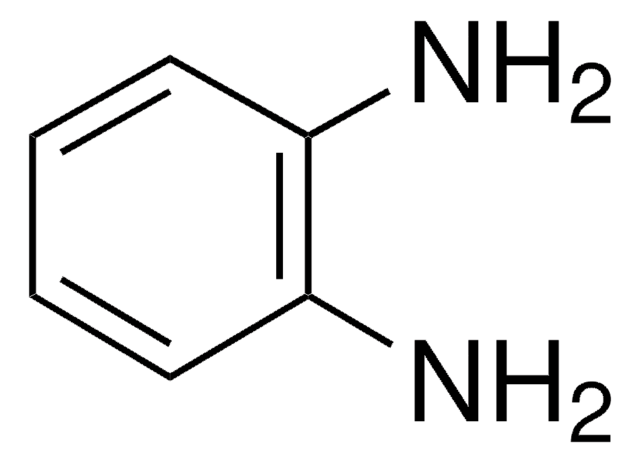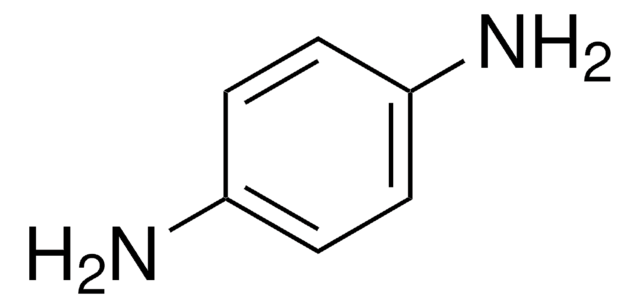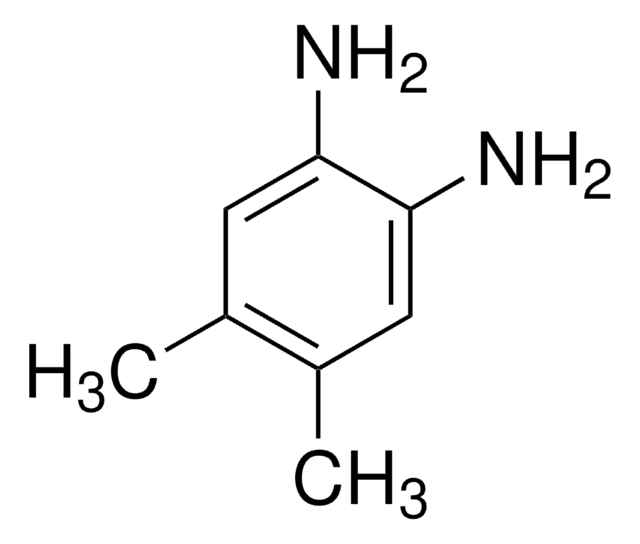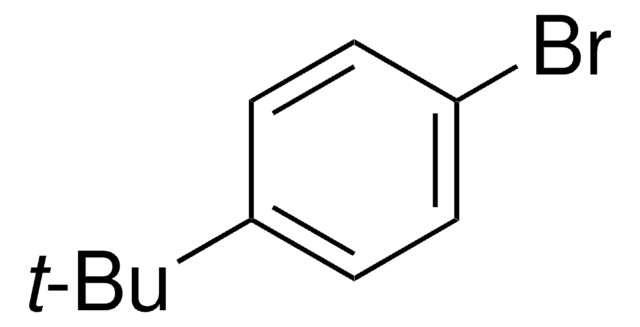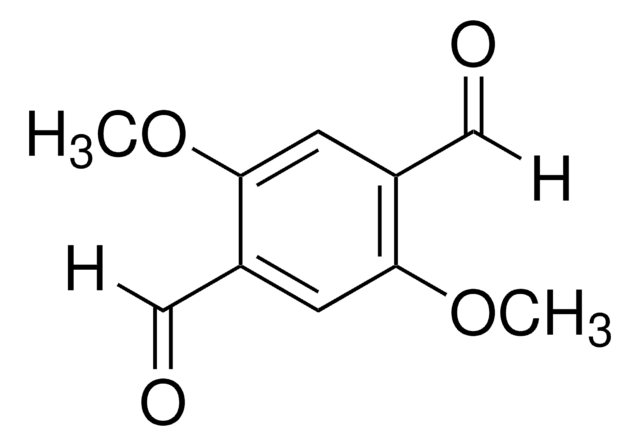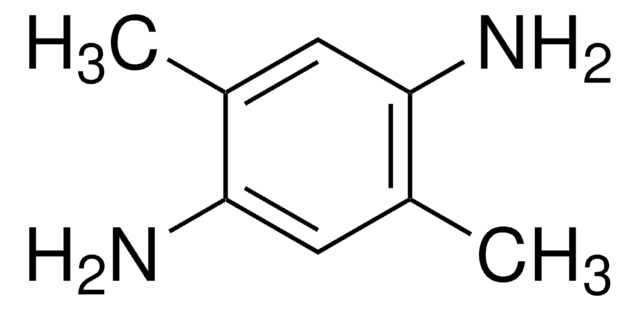Alle Fotos(2)
Wichtige Dokumente
116157
1,4-Dibrom-2,5-dimethylbenzol
98%
Synonym(e):
2,5-Dibrom-p-xylol
Anmeldenzur Ansicht organisationsspezifischer und vertraglich vereinbarter Preise
Alle Fotos(2)
About This Item
Lineare Formel:
(CH3)2C6H2Br2
CAS-Nummer:
Molekulargewicht:
263.96
EG-Nummer:
MDL-Nummer:
UNSPSC-Code:
12352100
PubChem Substanz-ID:
NACRES:
NA.22
Empfohlene Produkte
Qualitätsniveau
Assay
98%
Form
solid
bp
261 °C (lit.)
mp (Schmelzpunkt)
72-74 °C (lit.)
Funktionelle Gruppe
bromo
SMILES String
Cc1cc(Br)c(C)cc1Br
InChI
1S/C8H8Br2/c1-5-3-8(10)6(2)4-7(5)9/h3-4H,1-2H3
InChIKey
QENIALCDPFDFHX-UHFFFAOYSA-N
Suchen Sie nach ähnlichen Produkten? Aufrufen Leitfaden zum Produktvergleich
Verwandte Kategorien
Anwendung
1,4-dibromo-2,5-dimethylbenzene has been used in the preparation of 4,4″-diformyl-2′,5′-dimethyl-1,1′.4′,1″-terphenyl. It has also been used in the preparation of 1,4-diformyl-2,5-dimethylbenzene.
Signalwort
Warning
H-Sätze
Gefahreneinstufungen
Aquatic Chronic 2 - Eye Irrit. 2 - Skin Irrit. 2 - STOT SE 3
Zielorgane
Respiratory system
Lagerklassenschlüssel
11 - Combustible Solids
WGK
WGK 3
Persönliche Schutzausrüstung
dust mask type N95 (US), Eyeshields, Gloves
Hier finden Sie alle aktuellen Versionen:
Besitzen Sie dieses Produkt bereits?
In der Dokumentenbibliothek finden Sie die Dokumentation zu den Produkten, die Sie kürzlich erworben haben.
Kunden haben sich ebenfalls angesehen
Nikolai Kuhnert et al.
Organic & biomolecular chemistry, 1(7), 1157-1170 (2003-08-21)
The synthesis of aromatic dicarboxaldehydes, using dilithiation methodology is described along with their reactivity, in the [3 + 3] cyclocondensation reaction, with (1R,2R)-diaminocyclohexane to give trianglimine macrocycles. The scope and limitations of the cyclocondensation reaction are studied and some comments
Yuxiang Du et al.
Light, science & applications, 9, 151-151 (2020-09-10)
Tuneable microlasers that span the full visible spectrum, particularly red, green, and blue (RGB) colors, are of crucial importance for various optical devices. However, RGB microlasers usually operate in multimode because the mode selection strategy cannot be applied to the
Nikolai Kuhnert et al.
Organic & biomolecular chemistry, 3(10), 1911-1921 (2005-05-13)
The synthesis of aromatic dicarboxaldehydes is described along with their reactivity in the [3 + 3] cyclocondensation reaction with (1R,2R)-diaminocyclohexane to give trianglimine macrocycles. In particular, the scope and limitation of the reaction with regard to complete control of the
Unser Team von Wissenschaftlern verfügt über Erfahrung in allen Forschungsbereichen einschließlich Life Science, Materialwissenschaften, chemischer Synthese, Chromatographie, Analytik und vielen mehr..
Setzen Sie sich mit dem technischen Dienst in Verbindung.
